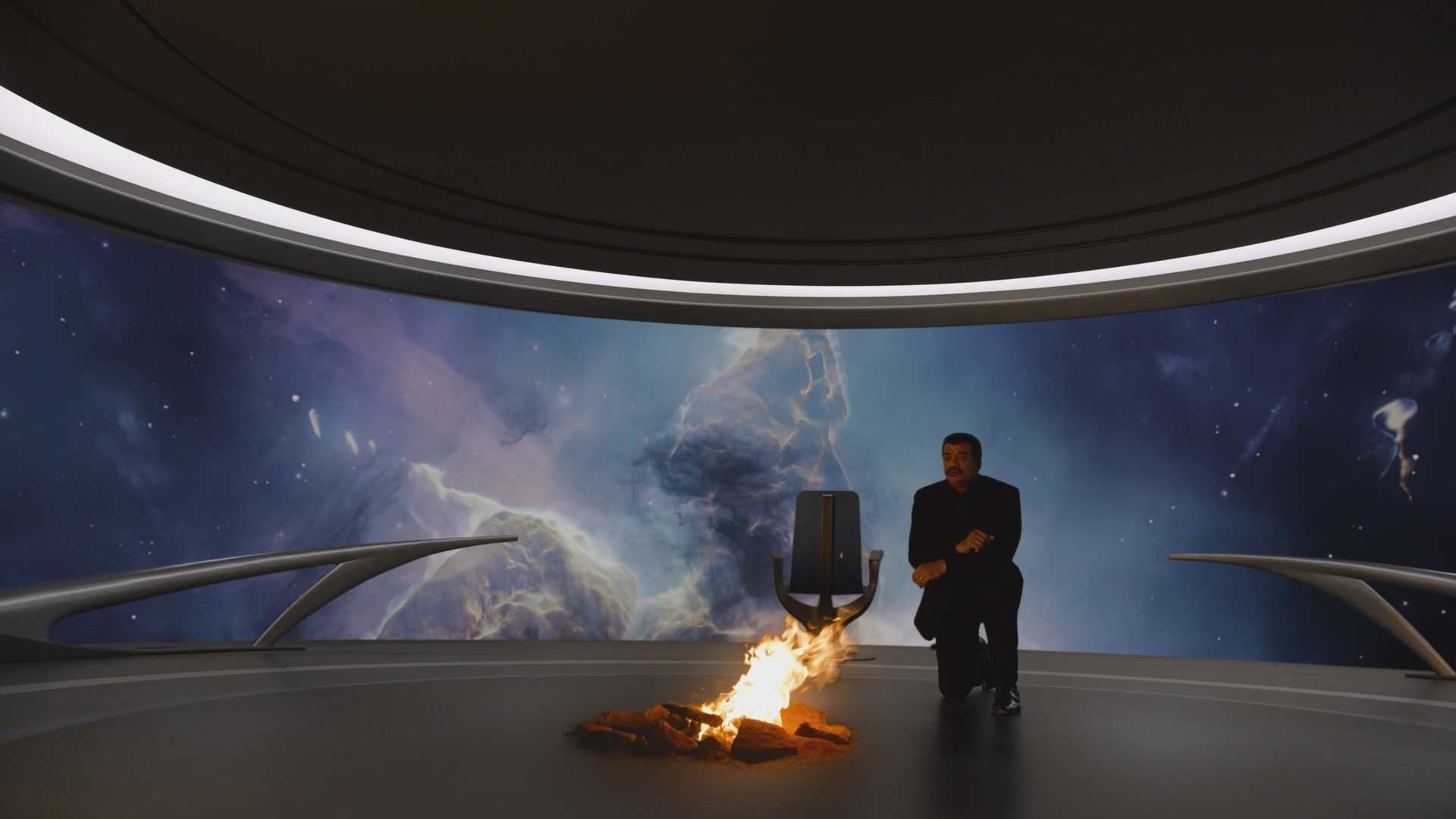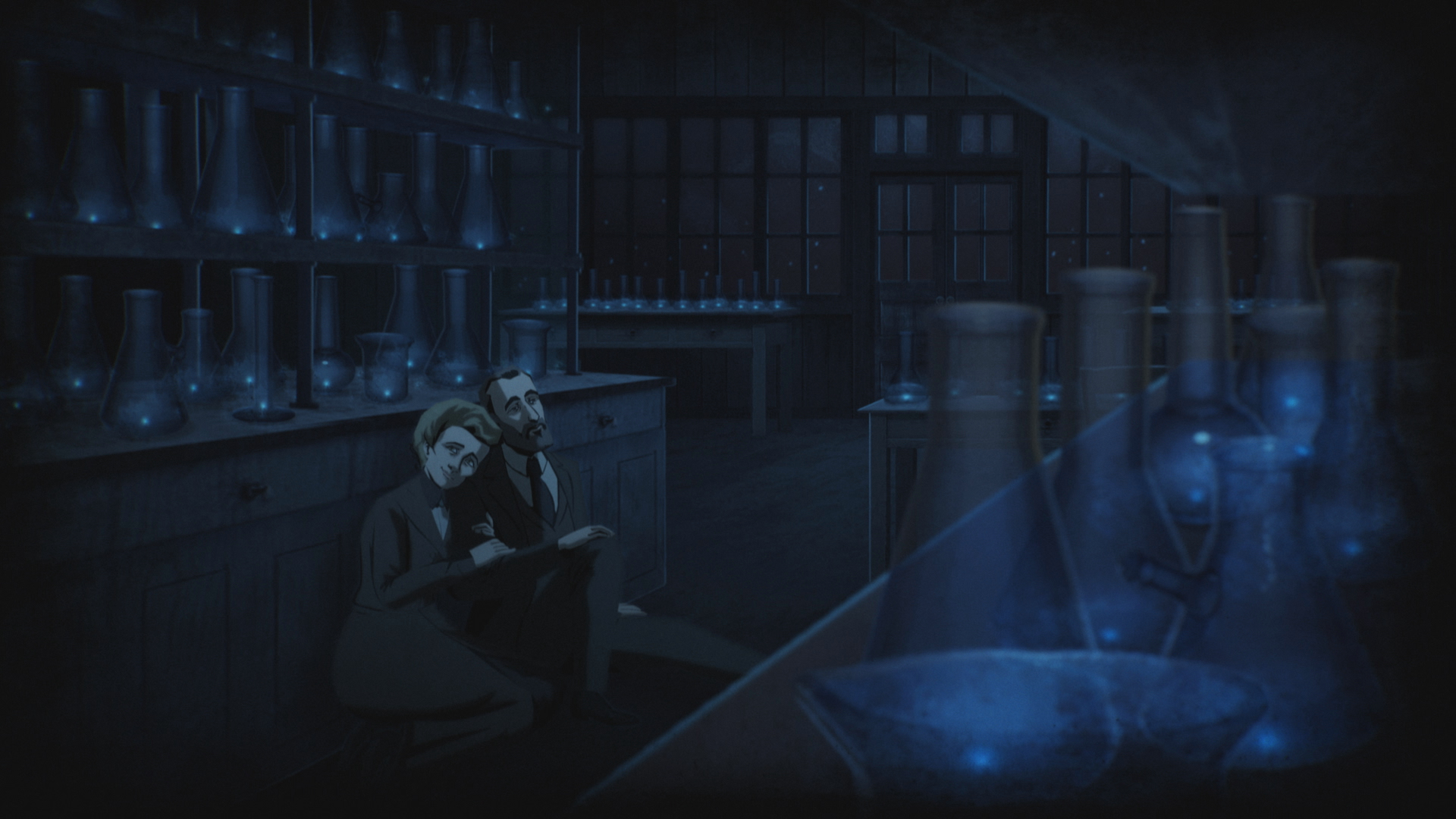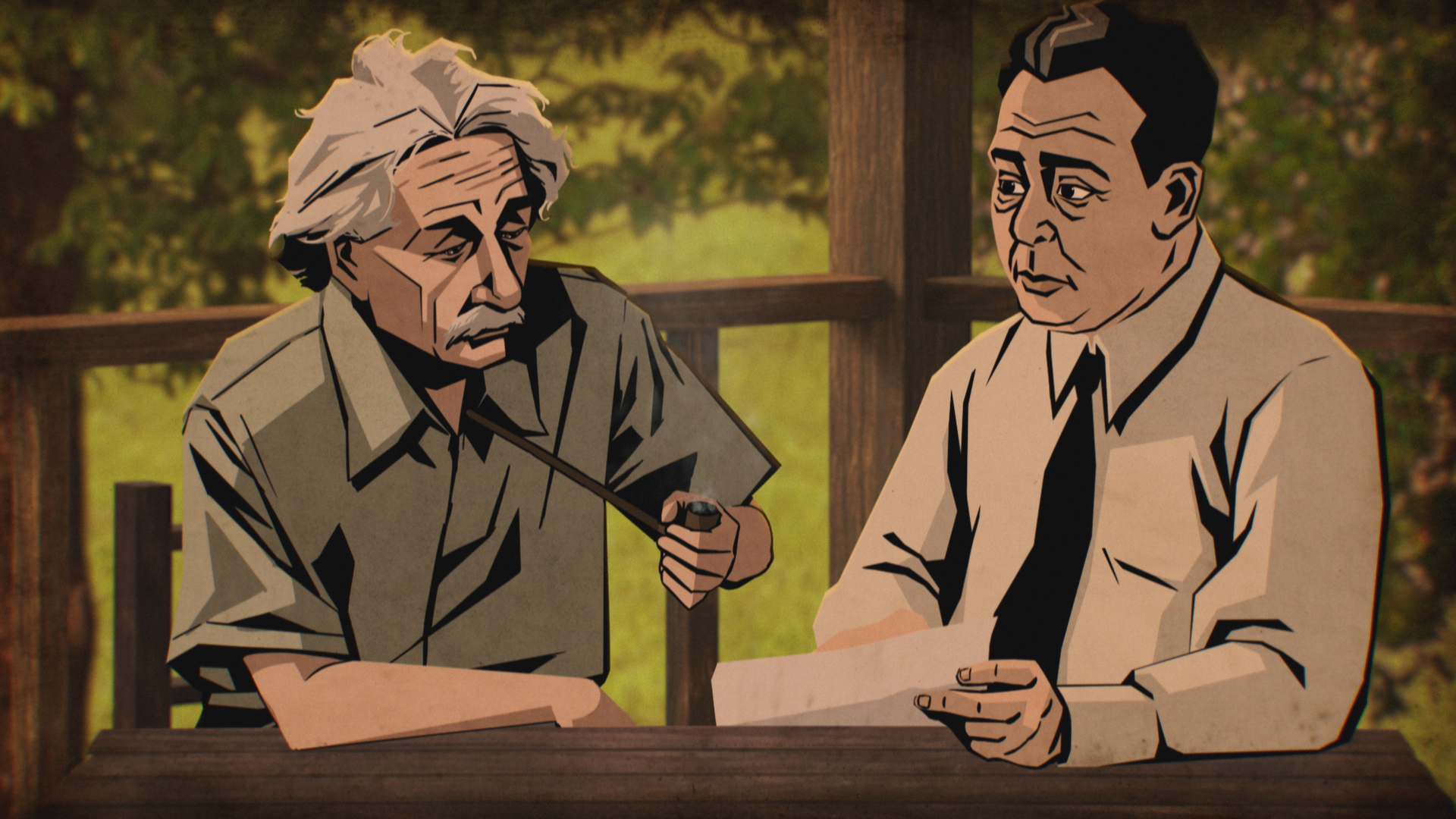Light and the quantum universe take center stage in 'Cosmos: Possible Worlds'
How an innocent quest for scientific knowledge opened up a deadly can of worms.
Neil deGrasse Tyson's "Cosmos: Possible Worlds" is as much a treatise of the pursuit of science itself as it is the wonderous achievements humans have reached in the realms of mathematics, physics and other scientific disciplines. Episode 9, "Magic Without Lies," explores the world of light — a concept Tyson notes has multiple meanings in scientific and cultural literature.
Tyson refers to light as "one of the greatest mysteries in the history of science," and one which would "unravel the fabric of the cosmos that we thought we knew." The story begins with the legendary Sir Isaac Newton, who contributed greatly to the study of light and color. Newton's homemade experiments — some of which involved inserting long needles into his own eyes — lead to major breakthroughs which would influence modern understanding of optical sciences. It was Newton who concluded that color is an aspect of light. "Newton's greatness stemmed from his questioning of the 'why' and 'how' of ordinary things," Tyson says of the brilliant physicist. These ordinary things, however, are about to get much more complicated.
Newton would go on to conclude and reason that light consisted of what he called "corpuscles," streams of particles that hit our retinas like bullets. Another visionary and familiar scientist, Christiaan Huygens — whose work we explored last week in Episode 8, "The Sacrifice of Cassini" — vigorously disagreed with Newton's findings; Hyugens saw light as a wave, much like sound.
Related: 'Cosmos: Possible Worlds' brings the search for E.T. down to Earth

To settle the score, scientist Thomas Young — whose accomplishments included deciphering Egyptian hieroglyphics and translating the ancient language, identifying a defect of the eye called astigmatism, and much more — designed the experiment meant to discover once and for all what light was made of. What he found "sent physics down the rabbit hole we still live in," Tyson says.
"There's a reason that arguments from authority hold little weight in science," Tyson says. "Nature, and nature only, settles the argument." Young had discovered something Newton had missed, and left a ticking time bomb would both astonish and disturb future researchers and scientists. He discovered light had an interference pattern, proving it behaved like a wave and not as a particle as Newton had postulated.
Physicist J.J. Thompson would later discover the existence of the electron by heating up an electrode until it spat the subatomic particles out, one by one. This discovery set scientists on a path to isolate ever shrinking units of light until they arrived at the single photon, performing Young's double slit experiment to track the path a photon took to understand the seemingly random pattern the photons generated. They found the waves from Young's interference pattern had disappeared, inexplicably; scientists had stumbled upon the quantum universe, where the mere act of observation influences the way particles behave.
Breaking space news, the latest updates on rocket launches, skywatching events and more!
Quantum physics found that both Hyugens and Newton were right and wrong; light is a wave, and a particle, and neither. Hugyens' probability theory would prove to be instrumental in how we understand quantum reality, which Tyson says represents an "undiscovered frontier," where particles "divorce from our everyday experience." To help illustrate this point, Tyson transports us to the world imagined by Edwin Abbott, called "Flatland," and extends Abbott's theory and applies it to our own three-dimensional reality.
"It's the rarest of events when a searcher happens on a hole in the curtain that hides the matrix," muses Tyson, reflecting on how hints of the existence of a quantum reality were present even when Charles Darwin found that time and the environment sculpted all living beings from the first living cell. Decades later, Albert Einstein would discover the quantum world which seemed to violate every rule of the natural world and the very rules of existence.
Related: 'God plays dice with the universe,' Einstein writes in letter about his qualms with quantum theory

Light, as it turns out, is governed by rules that we have yet to fully understand. "Is there any hope of rescuing our classical idea of reality in the quantum universe," ponders Tyson, before explaining that we don't need to understand quantum physics to exploit its power. Sometimes, science (an excellent exercise in humility, we're finding) forces us to accept certain levels of ambiguity with our research, and to withhold judgement.
"A Tale of Two Atoms"
There are some instances, however, where judgement in the practice of science is paramount, and ambiguity unacceptable. Episode 10, "A Tale of Two Atoms," recounts our history with military applications of nuclear chain reactions. The story begins with atoms, the building blocks of all matter, which Tyson sees as a fitting point of departure.
"When we seek the origin of atoms, we're searching for our own beginning," Tyson says, and this story is as much about life as it is about absolute death. Our beginning can be traced back to two atoms: a carbon atom and uranium atom.
Until the 19th century, scientists didn't know anything about the activity that went on inside atoms. It wasn't until physicist and chemist Marie Curie and her husband acquired uranium ore from what is now the Czech Republic that the scientific community would have any inkling of the secrets held within atoms. Curie and her husband, Pierre, spent years distilling and purifying the ore into pitchblende, which was 50-80% uranium. "We lived in our single occupation, as in a dream," Curie wrote of the lengthy and arduous process; it took nearly three years to process a tenth of a gram into what she called radium.
The Curies would find the material would not react to extreme temperatures and would randomly emit energy millions of times more potent than chemical energy, suggesting radioactivity. The way these "earthly stars," as Curie called them, glowed was evidence of a process occurring Inside the nuclei of radioactive atoms, proving the existence of particles even smaller than atoms. The darker implications of these findings, akin to the devastation seen in H.G. Wells' "The Time Machine," would coin the phrase "atomic bomb," would soon be known to the world.

Leo Szilard, a Hungarian physicist, envisioned the concept of a nuclear chain reaction leading to a devastating nuclear reaction while waiting for a green light at a traffic stop. "This was the moment our world changed," Tyson said.
"It was just the latest development on a continuum of violence that began long, long before," he continues, before delving into the slow shift in mindset that occurred in early humans causing our "kill radius" to expand as communication became easier and faster and as technology swiftly advanced. Together, an increase in "kill range" and "kill ratio" changed the landscape of war. This leads us to the present day, where speed and technology have made the kill radius large enough to take out an entire civilization.
"It's hard to pinpoint the precise moment when the first nuclear war began; some might trace it all the way back to that arrow sailing over the treetops. Others might say it started much later, with three messages," Tyson says, referring to letters written by scientists who would inform their leaders "that a huge increase in kill ratio was possible." Scientists Paul Harteck, Edward Teller, Albert Einstein, Leo Szilard, Gregory Flerov, J. Robert Oppenheimer and Joseph Rotblat were at the forefront of the investigation into harnessing atomic nuclei for use in modern warfare.

Among these, Rotblat's story is highlighted by Tyson: "If Edward Teller had a polar opposite in this scientific community, it would have been Joseph Rotblat." Scientists cited the building of nuclear weapons as a deterrent to other countries using them, and this was the driving rationale behind the Manhattan Project, the U.S. government's efforts to research, build and use an atomic bomb during World War II.
The Manhattan Project would continue long after the possibility of Hitler acquiring such weapons waned and Germany had surrendered. Only one scientist resigned from the Manhattan Project at this point: Joseph Rotblat. Denying moral superiority, he embarked on a quest to find his long-lost wife in Warsaw, only to discover that she had been killed in the Holocaust.
Today, the specter of nuclear war haunts us still. "How can we sleep so soundly in the shadow of a smoking volcano," Tyson asks solemnly, standing in front of the modest Trinity Site monument in New Mexico, where the first test detonation of a nuclear bomb took place. The small stature of the monument contrasts starkly with Tyson's words and the site's historical significance and the implications of what occurred there.
Tyson ends the episode with a warning, telling us the harrowing story of the 1902 eruption of Mount Pelée, a volcano on the Caribbean island of Martinique, whose pyroclastic flow consumed the town of Saint-Pierre in just minutes, killing approximately 30,000 people. This explosion, Tyson says, was the equivalent of just one nuclear warhead. We have "devised a means to tap cosmic fire, hidden at the heart of matter," Tyson says, adding that the ability to make nuclear weapons is knowledge we cannot unlearn.
The uranium and carbon atoms which were present at the origin of life on our planet have interwoven life and destruction into our genetic code. Ionizing radiation is destructive to living things and is what makes atomic weapons so much more dangerous than conventional ones. At high levels of ionizing radiation, exposure to lethal levels of radiation causes cells to become cancerous and genes to mutate, damage that is passed on, "vandalizing our future," as Tyson puts it. Perhaps a revolution in our thinking is what must follow the dawn of the atomic age, Tyson says. "Remember your humanity, and forget the rest."
"Cosmos" airs on the National Geographic channel on Mondays at 8 p.m. ET/9 p.m. CT and will be reprised on the Fox television network this summer.
- 'Cosmos' with Neil deGrasse Tyson Returns in March 2020 on Fox, NatGeo Channel
- 'I want the solar system to become our backyard,' astrophysicist Neil deGrasse Tyson says
- Carl Sagan: Cosmos, Pale Blue Dot & famous quotes
Follow us on Twitter @Spacedotcom and on Facebook.
OFFER: Save 45% on 'All About Space' 'How it Works' and 'All About History'!
For a limited time, you can take out a digital subscription to any of our best-selling science magazines for just $2.38 per month, or 45% off the standard price for the first three months.
Melissa is a former contributor to Space.com who covered Space Movie and TV, specifically Neil deGrasse Tyson's "Cosmos: Possible Worlds." She also was featured in Ad Astra, the official magazine of the National Space Society, penning, "REACHING FOR THE STARS," Education Is the First Step Toward Space Settlement and "MANY HAPPY RETURNS," Returns on Investment from Space Education

